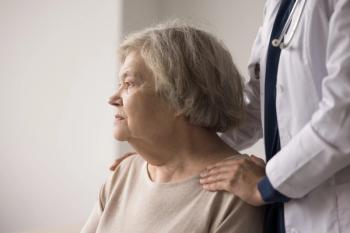
- Psychiatric Times Vol 36, Issue 2
- Volume 36
- Issue 2
Anxiety Disorders in Children and Adolescents: New Findings
Recent studies and meta-analyses discussed here address mental health hospitalization, optimal treatment, and long-term outcome for children and adolescents with anxiety disorders.
Anxiety disorders are the most common psychiatric condition in youth. Lifetime prevalence rates for any anxiety disorder in adolescents is 31.9%.1Anxiety disorders occur early in childhood with a median age of onset of 6 years. These disorders lead to significant impairment in academic, social, and family functioning. In clinical practice, it is common to see children who are homeschooled because of severe untreated anxiety disorders. Untreated anxiety disorders may also be a precursor for MDD. There have been some recent studies and meta-analyses that address mental health hospitalization, optimal treatment, and long-term outcome for children and adolescents with anxiety disorders.
Mental health hospitalization
In a
The median age of the youths with anxiety disorders was 12 years old and 55% were female. The incidence of new anxiety diagnoses were as follows: unspecified anxiety disorder (53%), generalized anxiety disorder (25%), obsessive-compulsive disorder (5%), and posttraumatic stress disorder (4%). Within a one-year period from diagnosis, 2% of these youths had a mental-health related hospitalization, 1% had a recorded suicidal ideation claim, and .08% had inpatient treated self-harm. Emergency room visits were high (20%), and 1.4% had an anxiety-related emergency room visit within one year of a new anxiety disorder diagnosis. The two-year incidence of these events was similar.
Rates of these events were highest in older children with baseline comorbid depression. Rates were lower in the comparator group (mental health-related hospitalization 0.5%, treated self-harm 0.01%, and emergency room visits 13%). Findings from this study further demonstrate the significant adverse effects of anxiety disorders in children and adolescents.
Antidepressant treatment
By week 2 there were statistically significant differences between medication and placebo, and by week 6 there were clinically significant treatment differences between antidepressant medication and placebo. There were also class differences in effectiveness between SSRIs and SNRIs. Compared with SNRIs, SSRIs showed significantly greater improvement by the second week of treatment, which was maintained through week 12.
There was no difference in response over time between high- and low-dose SSRI treatment; however high dose resulted in statistically significant improvement earlier (week 2) compared with low dose. The results of
Psychotherapy
A
• Group behavioral therapy (BT)
• Individual and group BT
• Individual BT with parental involvement
• Group cognitive behavioral therapy (CBT)
• Group CBT with parental involvement
• Individual CBT
• Individual and group CBT
• Individual CBT with parental involvement
• Internet-assisted CBT
• Parent-only CBT
• Bibliotherapy CBT
The 4 control conditions included wait list, psychological placebo, no treatment, and treatment as usual.
All of the psychotherapies were found to be more effective than the wait list control. Of all of the therapies, only group CBT was significantly more effective in treating anxiety symptoms than the other psychotherapies or the control conditions at both posttreatment and at short-term follow up (the median duration of acute treatment was 12 weeks and the longest follow up was 6 months). Based on these findings, the researchers suggest that group CBT may be the initial treatment for youth with anxiety disorders; however these findings require further research.
Long-term outcome
The
Across all 4 years, 21.7% of youth were in stable remission, 30% were chronically ill, and 48% relapsed. Those youths who responded to acute treatment were more likely to be in remission during the course of the follow-up. There was no association between the initial treatment group and remission status. These findings indicate that anxiety disorders in children and adolescents are often chronic and may require longer-term or intermittent treatment beyond acute treatment.
Disclosures:
Dr Wagner is Professor and Chair, Department of Psychiatry and Behavioral Sciences, University of Texas Medical Branch, Galveston, TX. She is President of the American Academy of Child and Adolescent Psychiatry.
References:
1. Merikangas KR, He JP, Burstein M, et al.
2. Bushnell GA, Gaynes BN, Compton, SN, et al.
3. Strawn JR, Mills JA, Sauley BA, et al.
4. Zhou X, Zhang Y, Furukawa TA, et al.
5. Ginsburg GS, Becker-Haimes EM, Keeton C, et al.
Articles in this issue
almost 7 years ago
Introduction: Convergence of Thought?almost 7 years ago
Immunotherapy as Personalized Medicine for Schizophrenia?almost 7 years ago
Understanding the Risks and Benefits of Antipsychotic Polypharmacyalmost 7 years ago
Project Untangled: A Journey of Hope and Healingalmost 7 years ago
Coaching Families to Address Addictionalmost 7 years ago
Embracing Changesalmost 7 years ago
US Life Expectancy: The Mental Health Perspectivealmost 7 years ago
The Changing Face of Psychiatry in the Age of Climate ChangeNewsletter
Receive trusted psychiatric news, expert analysis, and clinical insights — subscribe today to support your practice and your patients.













